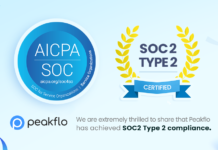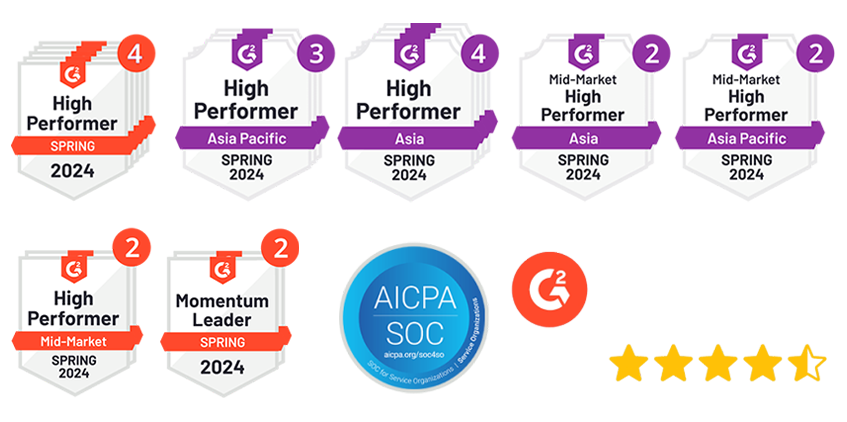ACH (Automated Clearing House) transfers are electronic transactions facilitated through the Automated Clearing House network. Common examples include the direct deposit of payroll and tax funds. If your salary is deposited directly into your account, it’s essentially an ACH transfer. In 2022, ACH payments experienced a notable increase of $1 trillion for the tenth consecutive year, as reported by the National Automated Clearinghouse Association (NACHA).
There are two types of Automated Clearing House transactions: ACH credit and ACH debit.
ACH Debit: In this process, the person making the payment (the payer, like a customer) gives permission to the recipient (the payee, such as a merchant) to withdraw funds directly from their account. An example is the automatic payment of an electricity bill through auto-pay. This type of ACH payment is advantageous because it guarantees that your bills are settled punctually without the need for manual involvement.
ACH Credit: The person making the payment allows the recipient to withdraw the necessary funds from their account when payment is due. This is commonly used for direct salary deposits. ACH credit transactions have the advantage of eliminating the need for paper checks.
In this article, we aim to explain ACH credit meaning, its benefits, examples, how it works, and how it differs from other payment methods.
What Is an ACH Credit?
ACH credit refers to payments initiated when an organization or individual instructs the ACH payment network to transfer a certain amount from their account to another account. It is a type of EFT transaction. Examples include businesses paying employees for their services or government entities distributing funds to citizens’ accounts.
ACH credit is a specific type of ACH used to transfer funds from one bank account to another. Different from ACH debit, ACH credit is commonly used to withdraw funds from a bank account for various purposes, including payments for mortgages or credit card bills.
ACH credits are widely used for different business purposes, including:
- Direct deposit of payroll and government benefits
- Recurring bill payments
- B2B or business-to-business transactions
- International money transfers
- Refunds or purchases
- Regular payments
Unlike other payment methods like paper checks, ACH credits are processed electronically. This makes them faster, more efficient, and cheaper.
ACH credits also provide better security because they use standard procedures and encryption to protect your information. This helps reduce the chances of fraud and keeps sensitive financial details safe.
The funds usually reach the destination account within a few hours to a few business days. To send an ACH credit, you only need the recipient’s name, banking details, routing number, and account number.
How Does an ACH Credit Work?
An ACH credit works by using the Automated Clearing House (ACH) network to electronically transfer funds from one bank account to another. Banks play a crucial role in the ACH credit process as they act as intermediaries between the originator and recipient’s financial institutions. We will discuss the steps in detail in the upcoming section.
Advantages of Using ACH Credits
ACH credits offer several advantages over other payment methods. Some of the key benefits include:
1. Lower Transaction Fees
ACH transactions usually have lower fees compared to other payment methods like wire transfers or remittance transfers. This makes ACH credit payments a cheaper choice for both businesses and consumers.
2. Faster Settlement Times
While ACH turnaround time may take a few days to process, they are generally faster than paper-based payments like checks. It can be beneficial for businesses that need to manage cash flow more efficiently.
3. Greater Convenience for Businesses
ACH credits provide an easier way for businesses to make payments, like for regular expenses such as payroll and utility bills. This method removes the need to write and mail checks, saving time and lowering the chances of making mistakes.
Overall, ACH credit payments provide a reliable, secure, and cost-effective way to transfer funds electronically between bank accounts, making them an essential component of modern payment systems for businesses and individuals alike.
Disadvantages of Using ACH Credits
There are many benefits of ACH credits, but there are also some potential downsides to consider, they are:
1. Higher Risk of Fraud Compared to Wire Transfers (Remittance Transfer)
ACH credits are usually safer than traditional paper payments, but there is still some risk of fraud. Scammers can use stolen bank account details to make unauthorized ACH transactions. Once the money is transferred, it’s often hard to get it back. Other ACH credit scams to watch out for include phishing scams, Business Email Compromise (BEC) scams, and unauthorized ACH credits.
2. Limited Ability to Reverse Payments
ACH credits can be hard to reverse once the money has been sent, especially if there are unauthorized transactions or mistakes. This may not be the best choice for businesses or individuals who need to reverse payments quickly.
It’s important to carefully consider the pros and cons of using ACH credits before making a decision. While ACH credits have many benefits, they might not be the best option for everyone, especially for those who need more security or flexibility in their payment choices.
Types of ACH Credits
Here are some examples of ACH credit transactions commonly used by bank clients.
Payroll
Companies can use ACH to direct deposit of payroll. This allows employers to pay their employees electronically in an easier way.
Government Benefits
ACH credits can be used to receive government benefits, such as social security, disability, or unemployment benefits payments.
Vendor Payments
You can use ACH transactions to make payments to vendors, suppliers, or other business partners. This can save time and reduce errors compared to paper-based payment methods like checks.
Expense Reimbursements
Manage expense reimbursement for business-related expenses or tax refunds more practically without paper checks using the ACH credit process.
Purchasing Goods Online
If credit card payment won’t work in a small business, you can use ACH credits to pay for goods or services online, such as through online bill payment or e-commerce platforms.
Bill Payments
You can pay bills electronically, such as water or electric bills, other utility bills, credit card bills, mortgage payments, or other types of payment.
How to Initiate an ACH Credit
You will need to follow these steps to initiate an ACH credit.
- Obtain The Recipient’s Banking Information: You will need the recipient’s name, bank routing number, and account number to initiate an ACH transaction.
- Complete The Authorization: You will need to obtain formal authorization from the recipient to initiate the ACH transaction.
- Contact Your Bank: Provide the recipient’s banking information and the amount of the transfer to the bank.
- Provide Information: You may need to provide additional information, such as the purpose of the transfer or any reference numbers.
- Verify Information: Make sure all of the information is accurate before submitting the ACH credit request to your bank.
You will typically need to provide the following ACH requirements.
- The recipient’s name and bank routing number.
- The recipient’s bank account number.
- The amount of the transfer.
- The purpose of the transfer.
- Any reference numbers or other additional information.
It’s important to ensure that all of the information is accurate to avoid any delays or errors in the ACH credit transfers.
How Much Are the ACH Credit Transaction Fees?
ACH credit fees charged by the network itself are minimal in fractions of a penny. However, processing partners may charge additional fees ranging from 10 cents to $1.50.
Here are some factors that determine the amount of ACH credit transaction fees.
- The number of transactions monthly.
- How large those transactions are.
- The likelihood of returns.
- Fund transfer duration (same-day processing is more expensive).
- The account validation method.
Direct costs for small businesses can exceed a dollar per transaction, but they decrease with scale.
ACH credit limits can change based on the rules of the banks involved in the transaction. Usually, there isn’t a fixed limit on how much money can be sent through ACH, but some banks may have their own limits. It’s a good idea to check with your bank to learn about their specific policies on ACH credit limits.
ACH Credit vs. Wire Transfer vs Checks
Here are some highlighted differences between ACH vs. wire transfer vs. checks:
| ACH Credit | Wire Transfer | Checks |
| ACH credit usually takes a few hours to a few business days to process. | Wire transfers are usually processed on the same day or the next day. | Checks can take several days or weeks to clear. |
| ACH credit payments are generally cheaper ranging between $0.20 – $1.50 per transaction. | Wire transfers are generally more expensive ranging between $15 – $35 per transaction. | Checks are generally more expensive ranging between $4 – $20 per transaction. |
| ACH credits are generally secure. | Wire transfers are generally secure. | Checks that have high risks of being lost, stolen, or forged. |
| ACH credits are reversible in case of error or fraud. | Wire transfers are irreversible once sent. | A cleared check cannot be reversed. |
The choice of payment method depends on what the people involved need and prefer, as well as how urgent and how much the transaction is. ACH credit transfers and wire transfers are easier to use than checks, which need to be physically delivered and processed.
Pay Easy with Peakflo
Summary of key points in the article, ACH transaction is:
- Electronic payments can be initiated by businesses, individuals, or government agencies.
- Requires authorization from both parties involved and can be used for various types of transactions, such as payroll, vendor payments, direct deposits, and bill payments.
- Processed through the ACH network, which is a secure and efficient system that enables funds to be transferred within a few hours to a few business days.
- Offer several advantages, including lower transaction fees and greater convenience for businesses.
By using ACH transfer, parties can save time and money on processing fees and benefit from faster settlement times.
If you’d like to cut bill payment time by 2x, Peakflo can be your solution. Our accounts payable software comes with end-to-end automation features to fast-track your procurement-to-payment cycle. Take our product tour and see for yourself!
FAQ
Are ACH and direct deposit the same thing?
Yes, direct deposit is a type of ACH credit transfer where funds, such as a paycheck, are electronically placed into the recipient’s bank account.
What is the difference between ACH debit and ACH credit?
An ACH debit occurs when funds are drawn from an account, like with auto-pay setups. On the other hand, an ACH credit happens when funds are pushed into an account, such as when an employer deposits a salary.
What is the typical clearance time for ACH credit?
According to NACHA, ACH credit payments are typically processed within one business day.
Is it possible to reverse an ACH credit?
Certainly, an ACH credit can be reversed in specific situations, and this reversal must take place within five business days from the original transaction date.
What are ACH Routing Numbers?
ACH routing numbers, comprising 9 digits, are crucial for identifying a specific bank or financial institution, playing a vital role in facilitating ACH payments. You can obtain your ACH routing number by reaching out to your bank or credit union.
Do banks impose fees for ACH payments?
Yes, banks usually charge fees for ACH transactions, and the specific cost depends on the bank and the transaction volume.










![Why AI Sales Calls Are Making Good Sales Reps Even Better [2025 Guide] ai sales calls](https://blog.peakflo.co/wp-content/uploads/2025/09/65168cf6-3001-4733-8cbc-12d5684cf449-218x150.webp)


































